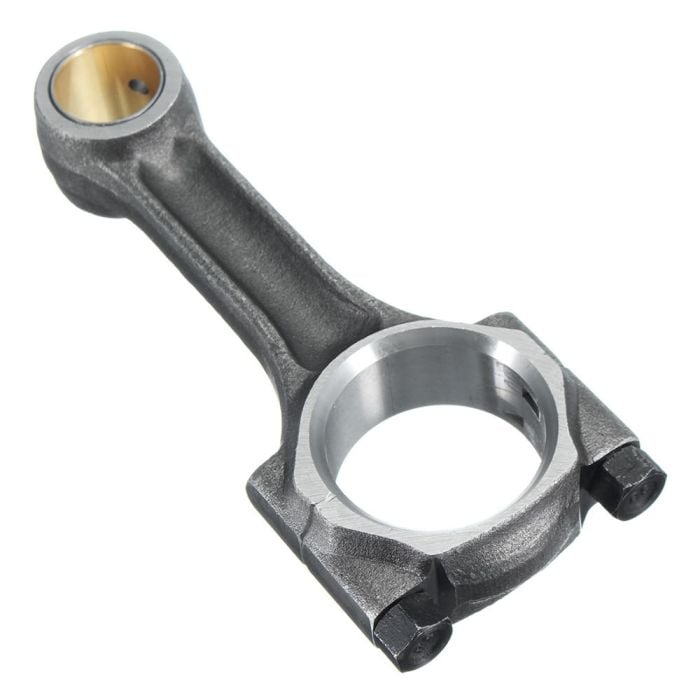Just How a Clp Engine Can Improve Effectiveness in Various Industries
The development of CLP engines notes a considerable change in functional efficiency across numerous sectors, driven by their capability to enhance gas consumption and decrease downtime. Industries such as production and logistics stand to get significantly from their robust layout and constant power result, which promise to enhance procedures and boost efficiency. As organizations progressively focus on sustainability along with effectiveness, the role of CLP engines ends up being even more vital. What stays to be seen is how these advancements will shape the future landscape of industrial operations and their influence on wider economic trends (clp engine).
Summary of CLP Engines
CLP engines, or Constant Fluid Propellant engines, represent a significant advancement in propulsion modern technology, specifically for area applications. These engines utilize a constant feed system that permits the continual expulsion of propellant, leading to enhanced performance and efficiency compared to conventional solid or hybrid propulsion systems. By preserving a continuous flow of fluid propellant, CLP engines can attain more accurate thrust control, which is vital for steering spacecraft in different mission scenarios.
The style of CLP engines integrates innovative materials and cutting-edge fuel management systems. clp engine. This leads to minimized weight and boosted integrity, important elements for long-duration space missions. The continuous procedure decreases the threat of combustion instability, a common obstacle in traditional rocket engines.

Advantages in Manufacturing
The manufacturing of Continual Liquid Propellant (CLP) engines provides several noteworthy advantages that boost both efficiency and cost-effectiveness. One of the main benefits is the structured production process, which minimizes the intricacy related to traditional propulsion systems. By utilizing liquid propellant, suppliers can achieve better accuracy in engine performance, causing enhanced power result and minimized waste.
Additionally, CLP engines facilitate a greater degree of modularity, allowing for less complicated assimilation right into numerous production lines. This flexibility can dramatically lower preparations and improve total functional versatility. Making use of CLP technology additionally often tends to lessen the requirement for considerable upkeep due to fewer relocating components, which equates right into decreased downtime and functional expenses.

Applications in Logistics
Leveraging Constant Liquid Propellant (CLP) engines in logistics provides significant benefits in operational efficiency and integrity. These engines give a durable remedy for numerous transportation demands, making it possible for the seamless movement of items across huge ranges. The inherent style of CLP engines enables consistent power result, which translates into smoother and more foreseeable transport timetables.
One of the key applications of CLP engines in logistics remains in heavy-duty products transportation, where they can drive both ground and aerial lorries. Their capability to maintain high performance under differing load problems makes certain that shipment timelines are met, consequently improving client contentment. Additionally, CLP engines can be integrated into automated logistics systems, assisting in real-time monitoring and enhancing route preparation.
Furthermore, the longevity of CLP engines decreases maintenance downtime, allowing logistics business to optimize their functional capacities. This is particularly valuable this link in warehousing operations, where performance in dealing with and transferring items is vital. As logistics proceeds to progress, the combination of CLP engines stands for a forward-thinking strategy that not only improves efficiency but likewise sustains the market's growing demands for integrity and rate.
Influence On Power Effectiveness
How do Continuous Fluid Propellant (CLP) engines improve energy effectiveness in transportation? CLP engines use a consistent flow of fluid gas, optimizing combustion procedures and preserving a secure drive outcome. This design decreases energy losses connected with traditional burning engines, where gas delivery can vary and bring about ineffectiveness.
The continual operation of CLP engines allows for a more reliable thermal cycle, leading to higher specific impulse contrasted to standard engines. clp engine. This converts to lowered fuel usage for the same amount of work done, significantly reducing operational costs across different transport fields, including air travel and maritime industries
Moreover, the ability of CLP this content engines to maintain ideal efficiency under differing load problems minimizes the demand for frequent acceleration and slowdown, further improving fuel efficiency. Improved power performance not just adds to cost savings however also leads to reduce greenhouse gas discharges, lining up with worldwide sustainability objectives.
Future Trends and Innovations
Arising advancements in Continual Fluid Propellant (CLP) engine innovation assurance to reinvent the landscape of transportation effectiveness and sustainability. As sectors pivot toward greener choices, CLP engines stand at the leading edge, integrating cutting-edge products and layout approaches that enhance performance while decreasing environmental impact.
Among one of the most encouraging trends is the fostering of crossbreed systems that integrate CLP engines with renewable resource resources. This harmony can maximize gas intake and minimize exhausts, aligning with international sustainability goals. Innovations in computational fluid dynamics (CFD) are assisting in the design of more aerodynamically reliable engines, leading to reduced drag and improved fuel performance.
Additionally, the development of wise surveillance systems is set to improve functional efficiencies. These systems leverage data analytics and IoT innovation to maximize engine efficiency in real-time, ensuring that the engines operate within their most reliable criteria.
As study remains to discover different propellant formulations-- such as biofuels and synthetic fuels-- the future of CLP engines looks encouraging. By harnessing these developments, markets can not just enhance their performance however likewise add dramatically to a cleaner, a lot more lasting future in transportation.
Verdict
In final thought, CLP engines represent a substantial innovation in efficiency throughout multiple markets. The assimilation of sophisticated materials and fewer moving you can try here components decreases maintenance requirements, while positioning with sustainability objectives settings CLP engines as an essential innovation for the future.